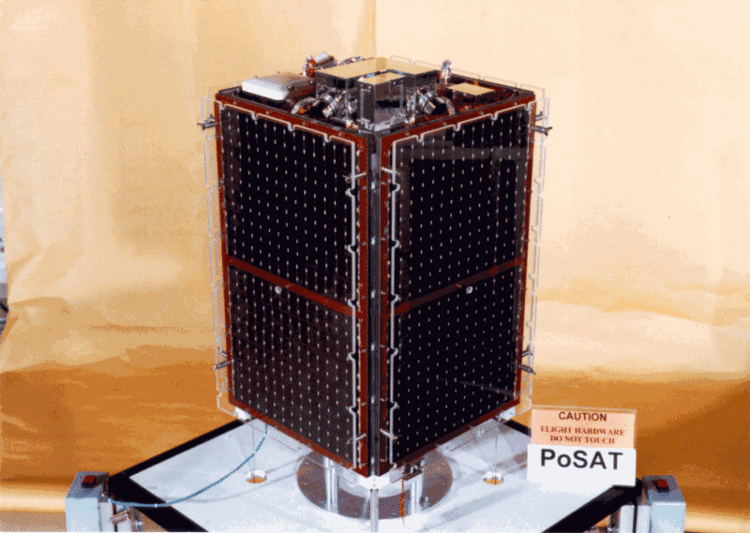 | ||
Similar Kitsat‑1, UoSAT‑2, Intasat, UoSAT‑12, Brasilsat‑A1 | ||
Reportagem televisiva sobre o posat 1 1 2
PoSAT-1, the first Portuguese satellite, was launched into orbit on September 26, 1993, on the 59th flight of the Ariane 4 rocket. The launch took place in the Kourou Space Centre, French Guiana. About 20 minutes and 35 seconds after launch, at an altitude of 807 km, PoSAT-1 separated itself from the rocket.
Contents
- Reportagem televisiva sobre o posat 1 1 2
- Reportagem televisiva sobre o posat 1 2 2
- The Mission
- The Satellite
- Numbers
- Death
- References

The PoSAT-1 weighs about 50 kg and belongs to the class of microsatellites, which are between 10 and 100 kg. The entire project was developed by a consortium of universities and companies in Portugal and was built at the University of Surrey, UK. The total cost was around €5 Million, about €3 Million paid by the Portuguese Government and €2 Million by the Portuguese companies involved (Po-SAT consortium: INETI, EFACEC, ALCATEL, MARCONI, OGMA, IST, UBI and CEDINTEC). The responsible for the project was Fernando Carvalho Rodrigues, known as the father of the first Portuguese satellite.

Reportagem televisiva sobre o posat 1 2 2
The Mission

The mission was called Flight 59, which launched several satellites: PoSAT-1 from Portugal, EyeSat and ItamSat from Italy, KitSat-B from South Korea, HealthSat (an international medical satellite) and Stella and SPOT-3 from France, the latter one a super satellite for photography recognition.
The Satellite

The PoSAT-1 is a box of aluminum, in the form of a parallelepiped, 58 centimeters long, 35 centimeters wide, 35 centimeters depth and weighs 50 kilograms. Over a first drawer that contains the batteries and the remote detection module are stacked 10 other drawers full of electronic cards. At the top of the satellite there are sensors for attitude and the stabilization mast, essential tools for PoSAT-1 to maintain correct orbit.
Four solar panels are mounted on the lateral sides of the structure of the satellite, forming a parallelepiped, which are the source of energy for all on-board systems. Each panel contains 1,344 cells of GaAs.
Numbers
Death
The physical death of the PoSAT-1 is expected to be 2043. PoSAT-1 stopped transmitting information to Earth in 2006.
